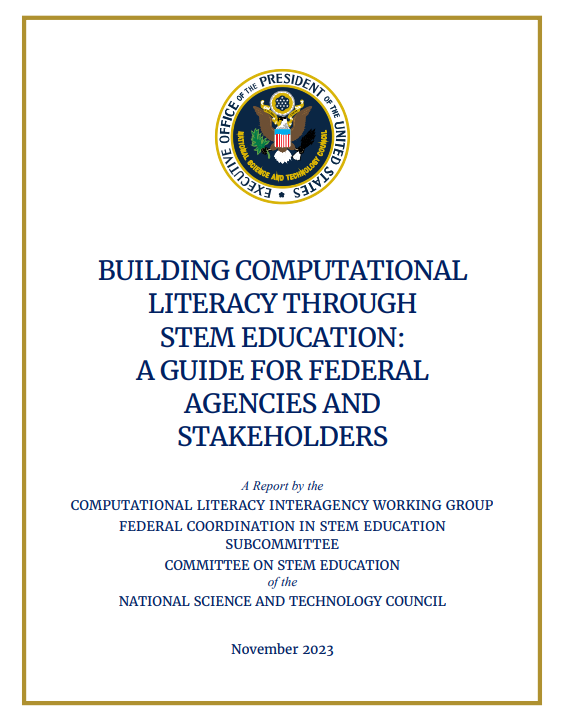
Executive Summary
President Biden has been clear: American science, technology and innovation—and the people that fuel
it—are key to achieving our nation’s great aspirations: ensuring robust health and plentiful economic
opportunity for every person; tackling the climate crisis and transitioning to clean energy; investing in
creating the industries of tomorrow; and advancing global security and stability1
. Digital devices and the
internet have transformed the way we engage in society, work, and everyday activities, and every
individual must have the basic digital knowledge and skills to benefit from technology fully, safely, and
securely.
A recent study reported over 90 percent of jobs across industries in the United States require at least
some digital skills.2 Computational literacy components are needed to provide on-ramps to good jobs
and stable careers. Computational literacy also promotes digital resilience and prepares people to
adapt to the changing demands for skills.3 Today’s students are tomorrow’s software and application
developers; data and business analysts; artificial intelligence, machine learning, and cybersecurity
specialists; digital content developers; environmental and renewable energy engineers; automation
technicians; quality control inspectors; and quantum information scientists. They are also tomorrow’s
teachers, nurses, entrepreneurs, customer service representatives, physical therapists and more. The
benefits of computational literacy can help all ages, including those who pursue careers in fields
beyond science, technology, engineering, and mathematics (STEM).
A computationally literate country is necessary to promote innovation and competitiveness, and to
build a workforce that can enhance national security, promote economic prosperity, and improve our
quality of life. Computational and communication technologies are rapidly evolving and creating
challenges to traditional instructional methods. Educational technology can improve learning. All
Americans need equitable access to educational technology, including sufficient high-speed internet
access.
This guide identifies and promotes best practices in building computational literacy in STEM education.
It includes examples of practices regarding online learning, diversity, equity, inclusion and accessibility,
examples of successful integration of computational literacy in STEM education, and examples of
computational literacy through the lens of emerging technologies. This report also includes resources for
federal agencies and education stakeholders to incorporate components of computational literacy in
STEM education at all levels. As STEM-serving disciplines expand, so too does the demand for
computational literacy instruction necessary for the workforce of today and beyond.In addition,
addressing issues of access is critical for improving computational literacy across the nation. Closing
the digital divide is an important step in enabling all learners to fully participate in the digital economy.
This guide includes recommendations to address the barriers and improve access across four areas: (1)
fundamental digital skills, (2) teacher professional development, (3) ethics, and (4) community
outreach. Equipped with computational literacy tools, America’s workforce will have the education,
training, and credentials to pursue high-demand jobs and work toward economic prosperity for all.